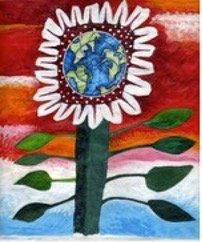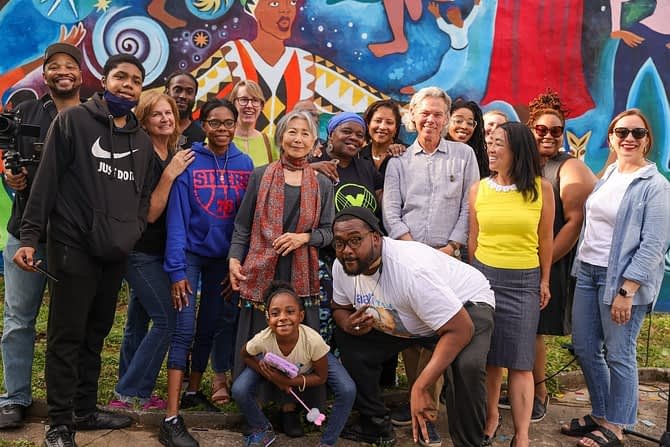Lily Yeh
Born in China, Lily emigrated to the United States in the early 1960s to attend the University of Pennsylvania’s Graduate School of Fine Arts. A successful painter and professor at Philadelphia’s University of the Arts, Lily traveled to Beijing in 1989 to show her work at the Central Institute of Fine Art. While there, she witnessed the tragic events of Tiananmen Square. Through the 1980s, Lily gradually realized that being an artist “is not just about making art…It is about delivering the vision one is given…and about doing the right thing without sparing oneself.”
In 1986, Lily Yeh was asked by the dancer and educator Arthur Hall to create a park in an abandoned lot next to his building in North Philadelphia. With a small grant, a few shovels, and little else, Lily invited children and adults in this ravaged inner city neighborhood to join her in clearing the rubble-filled lot. They then transformed the lot into an art park with brilliant mosaics and sculpted trees, creating an oasis of safety and peace.
The park blossomed into The Village of Arts and Humanities, a community-based art organization that Lily co-founded in 1989. During her tenure at The Village Lily, neighborhood residents and staff transformed more than 120 abandoned lots into gardens and parks. They also renovated abandoned homes, and created educational programs, art workshops, after-school programs, a youth theater, and joyful community celebrations. Under her leadership, The Village became an internationally recognized model for community building through the arts.
Lily’s vision has rippled out far beyond North Philadelphia’s borders. While working at The Village, she collaborated with residents of the Korogocho slum near Nairobi to transform a barren churchyard with murals and sculptures and traveled to Ghana, Ecuador, The Ivory Coast and the Republic of Georgia to work on similar projects. She developed The Rwanda Healing Project in Rugerero, a village of survivors of the horrendous Rwandan genocide of 1994. Lily worked with hundreds of children and families to create a memorial to the survivors of the genocide to transform their bleak village into a place of beauty and joy.
In 2002 she established Barefoot Artists to support her international work and replicate the Village model in devastated communities around the world.
Barefoot artists documentary
This lyrical and emotionally wrenching film explores the methods and motivations of Lily Yeh and her revolutionary work. It documents the two sides of Lily’s life: her international ventures mending the broken and helping to heal weakened spirits in communities in North America, Africa, China, and India, and a personal journey within, to repair her own fractured family..




